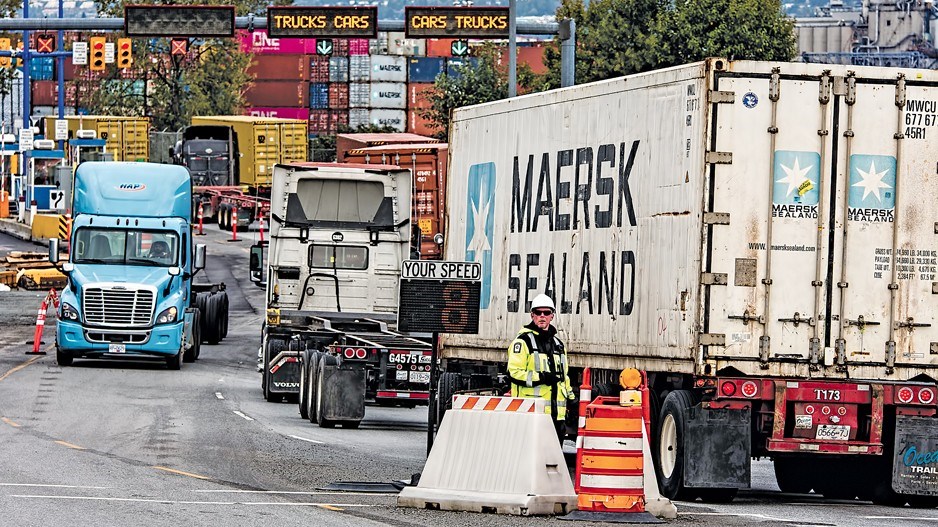The Port of Vancouver is now “bursting at the seams” when it comes to dealing with inbound containerized cargo.
The flood of cargo into B.C. ports, which follows the resumption of operations at several major Chinese ports following COVID-19 outbreaks, has severely strained operations for shippers scrambling to navigate through the cargo traffic jam.
Bruce Rodgers, executive director of the Canadian International Freight Forwarders Association (CIFFA), described the situation as “very dire. I don’t think we’ve experienced anything like this previously.”
Rodgers said cargo infrastructure, warehousing and truck transport operators are used to dealing with 3% to 5% spikes in traffic, but the current cargo traffic surge amounts to 15% more than normal per day and has accumulated day-to-day in recent weeks.
“Drayage operators’ chassis are full, and there’s no room to move any containers,” Rodgers said of the situation in Vancouver. “Warehousing is busting at the seams. If there were short-term solutions, the industry would have reacted already; the industry is very nimble that way. No, this is somewhat of a crisis situation.”
Compounding the lack of transport capacity to move shipments and a dearth of storage for stranded containers, Rodgers noted, is a reciprocal lack of exports coming from B.C.’s Interior to refill import containers.
Without the export demand, empty containers are sitting in Vancouver, which further strains storage and handling capacity.
The issue of cargo containers not being in the right places at the right time has plagued global shipping since mid-2020.
Werner Antweiler, associate professor at the University of British Columbia’s Sauder School of Business, said the seismic changes in the way people consume products and what they have been buying since the pandemic started have dramatically shifted demand on shipping routes. Demand for capacity on many routes has consequently skyrocketed while demand on other trade loops has plummeted.
Antweiler said that the containers with shipments heading into routes with little traffic are then stuck there after being unloaded because there is no demand to export cargo in the other direction.
The result? Empty containers that no one is willing to pay to move to where they are needed.
“We need to look at how these containers can be moved, because right now, no one is willing to pay for it,” Antweiler said. “It’s a missing market. We have to figure this out, and this will require some co-ordination to make sure in the future there’s a way – a mechanism – to pay for the moving of stranded containers to where they are needed. Perhaps through an industry-wide insurance or something like that … because it’s a very clear problem staring us in the eye.”
Meanwhile, CIFFA has been meeting with stakeholders to find a long-term solution so similar cargo traffic spikes do not have the same crippling effect on Vancouver’s ports.
One of Rodgers’ key concerns is the amount of time port expansion projects take to move through Ottawa.
He pointed to the Vancouver Fraser Port Authority’s Terminal 2 project at Roberts Bank and Deltaport Berth 4 (DP4), a competing container terminal expansion project proposal from GCT Global Container Terminals Canada, as examples of what would have mitigated the port’s current shipping bottleneck had either been approved in anything approaching a timely manner.
“We are 13 years since the Roberts Bank terminal expansion plans first hit the table,” Rodgers said. “Government cannot sit on their hands and wait so long to make their decisions.… The Roberts Bank terminal, even if it gets approval today, will not be done until 2030. That’s just unbelievable that a project is going to take over 20 years for something that was put forward because there was a perceived need. It’s now an urgent need, and we are still many years away.
“We are not going to pick sides,” he added when asked if there’s a preference for either Terminal 2 or DP4. “There’s merits to both, and at this point, we can use both today. Either would add important relief that doesn’t exist today.”




